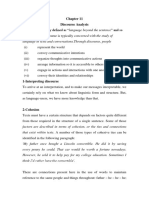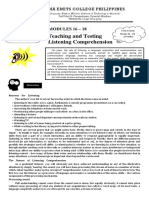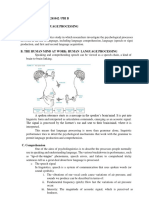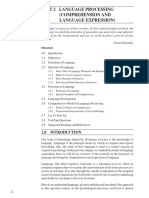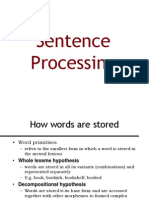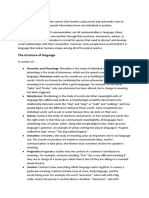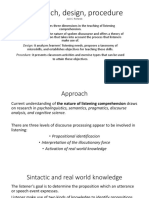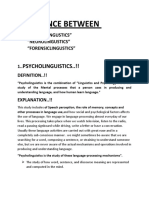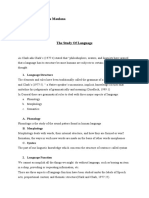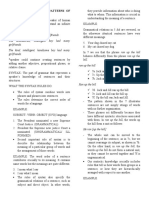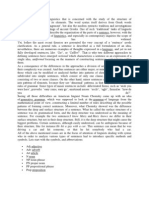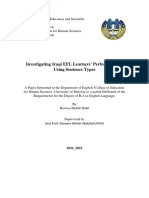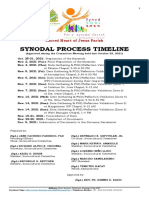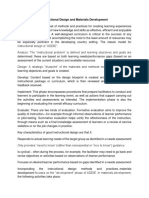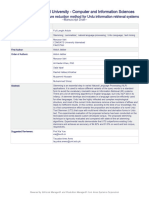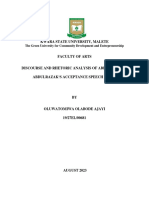0% found this document useful (0 votes)
211 views20 pagesSentence Processing Study Insights
1. The document discusses sentence processing and how listeners understand sentences. It aims to investigate the structural properties of sentences and how listeners are able to understand speakers' intentions through sentences despite ambiguities.
2. The author outlines different challenges in sentence processing like the rapid rate of speech and lack of clear articulation of words. Listeners must isolate words, understand grammar, and derive meaning from context.
3. Sentence structure and rules help listeners predict upcoming words. Pauses in speech provide clues about sentence structure. Understanding involves different language processing systems working sequentially or in parallel to analyze sounds, words, structure and meaning.
Uploaded by
Alfeo OriginalCopyright
© © All Rights Reserved
We take content rights seriously. If you suspect this is your content, claim it here.
Available Formats
Download as PDF, TXT or read online on Scribd
0% found this document useful (0 votes)
211 views20 pagesSentence Processing Study Insights
1. The document discusses sentence processing and how listeners understand sentences. It aims to investigate the structural properties of sentences and how listeners are able to understand speakers' intentions through sentences despite ambiguities.
2. The author outlines different challenges in sentence processing like the rapid rate of speech and lack of clear articulation of words. Listeners must isolate words, understand grammar, and derive meaning from context.
3. Sentence structure and rules help listeners predict upcoming words. Pauses in speech provide clues about sentence structure. Understanding involves different language processing systems working sequentially or in parallel to analyze sounds, words, structure and meaning.
Uploaded by
Alfeo OriginalCopyright
© © All Rights Reserved
We take content rights seriously. If you suspect this is your content, claim it here.
Available Formats
Download as PDF, TXT or read online on Scribd
/ 20




